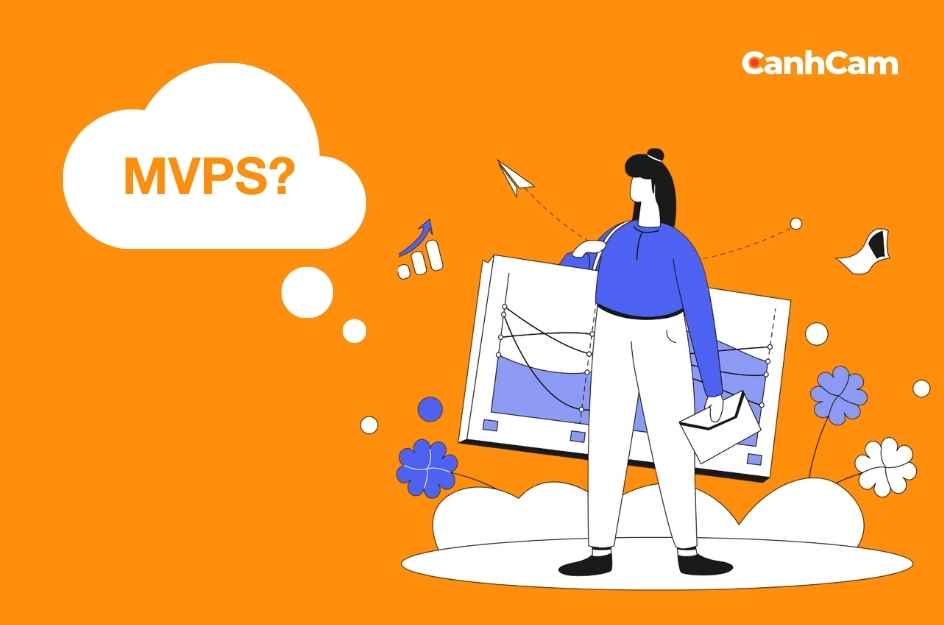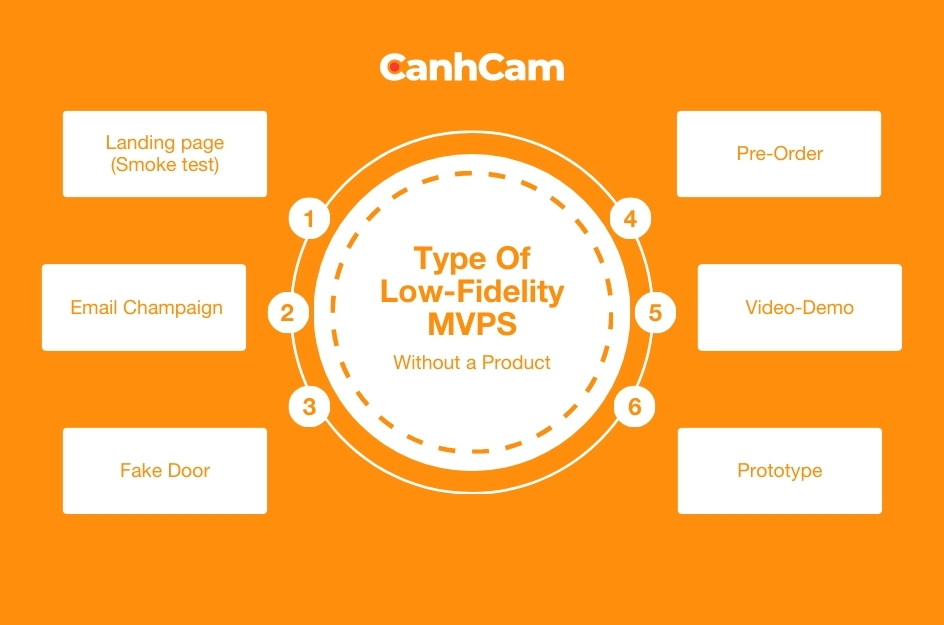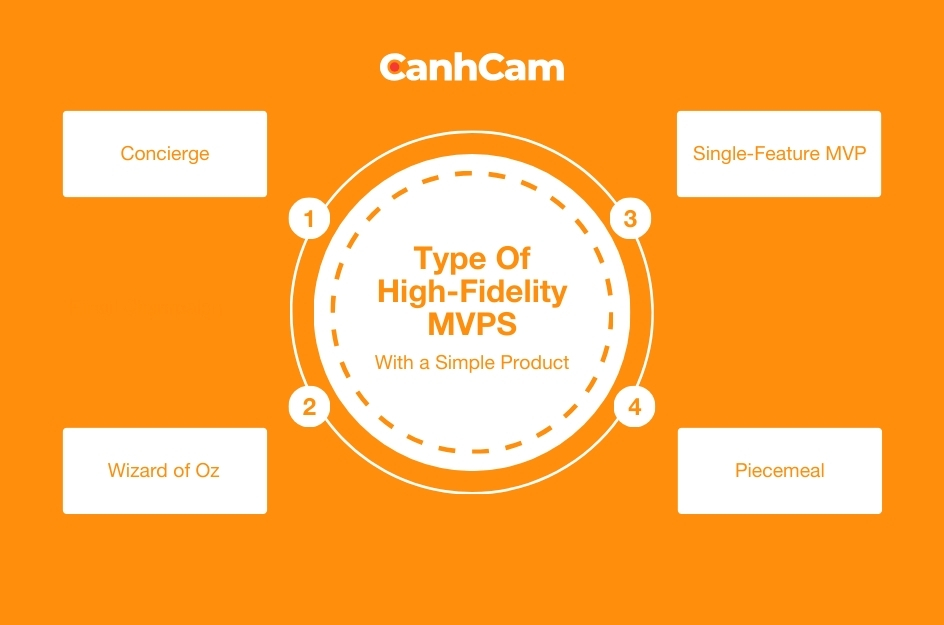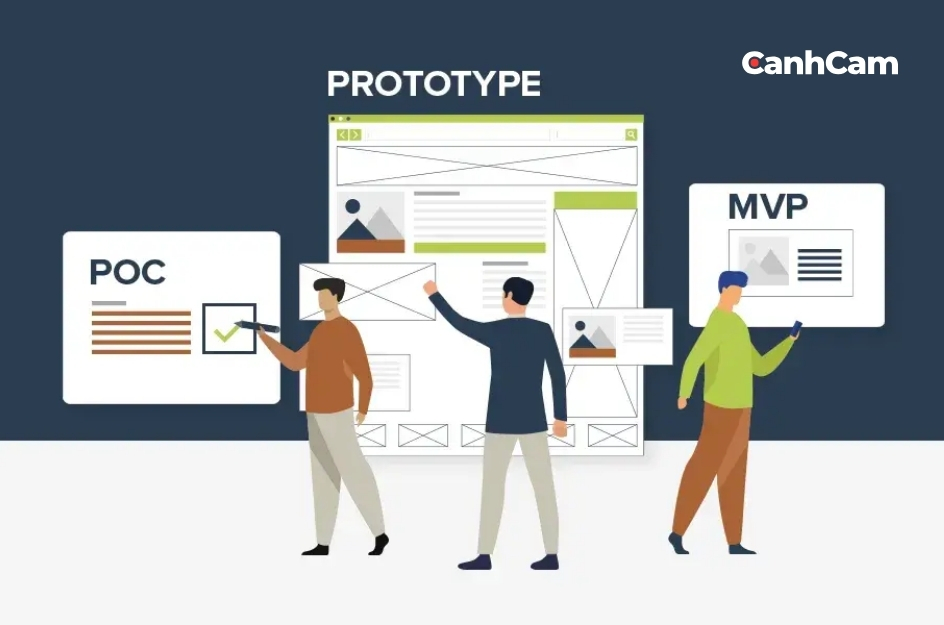Nearly every software product aimed at the general market aims to address a particular consumer problem and yield profits for its owner. However, predicting a solution's success and return on investment in advance can be challenging. It is prudent to assess the concept and allocate a minimal investment of resources and funds before developing a comprehensive product version.
That's why startups opt for the creation of Minimum Viable Products! Let's have CanhCam delve into the definition of an MVP and its advantages for startup companies. There are various MVP types available, catering to different budgets and objectives. This article aims to provide a comprehensive understanding of the MVP concept and assist in identifying the most suitable type based on your specific goals.
What is the reason for the existence of numerous types of MVPs?
The existence of numerous types of Minimum Viable Products is attributed to the diverse goals, limitations, and circumstances encountered by businesses. An MVP functions as a simplified product version, designed to fulfill the fundamental requirements of the target audience and assess its market feasibility.

The array of MVP types enables entrepreneurs to choose an approach based on factors such as business goals, financial constraints, time constraints, product nature, risk management, preferences of the target audience, and an iterative development process.
In the end, the variety of Minimum Viable Products underscores the adaptability of the concept in various business scenarios. This provides entrepreneurs with the flexibility to select the approach that aligns most effectively with their specific needs and goals.
Main types of MVPs for startups
The main types of MVP for startups generally fall into two main categories: low-fidelity and high-fidelity. Both categories serve pivotal roles in the process of product development and idea testing. Here is an overview of both types of MVPs:
Low-Fidelity MVP
A minimal viable product with low fidelity depicts the most fundamental iteration of a product or service. Typically characterized by lower precision, it employs simple tools such as paper models or wireframes. The interface design of a low-fidelity MVP is intentionally uncomplicated, emphasizing the essential functionality of the product.
Visit our services: website designing services
This approach aims to conserve time and resources during the development phase. Users interacting with a low-fidelity MVP only engage with core features, enabling them to assess and provide feedback efficiently.
High-Fidelity MVP
High-fidelity MVPs, characterized by heightened precision, may utilize interface design software like Sketch or Figma and software development tools to construct interactive interfaces. Specific features are developed in greater detail and with increased reliability compared to a low-fidelity MVP.
This type is suitable for products or services that have undergone initial idea testing and necessitates the creation of an almost finalized version for comprehensive evaluation. High-fidelity MVPs offer users a comprehensive perspective of the product, facilitating the collection of valuable feedback and enhancing the overall user experience.
Types of Low-Fidelity MVPs
In the course of developing a new product, the MVP stands as a pivotal concept for assessing the feasibility and acceptance of an idea. The MVP represents the minimal iteration of a product, incorporating basic features to address core user needs.
This strategy enables developers to collect user feedback and refine the product accordingly. Here are some low-fidelity MVP types:
Fake Door MVP
The Fake Door MVP offers a cost-effective approach by creating a simulated presence for a product without extensive resource allocation. This method minimizes financial risks while providing a means to gauge interest from the target audience. However, it has a drawback in the lack of detailed product information, which may lead to user misunderstandings and inaccurate assessments.
Landing Page MVP
The Landing Page MVP proves to be a cost-effective solution by establishing a dedicated web page, reducing expenses compared to full product development. It facilitates data collection on user interest and behaviour through links and forms. Nevertheless, its limitation lies in offering a somewhat restricted interactive experience, primarily focusing on data collection through clicks and form submissions.

Email Campaign MVP
The Email Campaign MVP enables rapid market testing by sending emails to the target audience, allowing for quick evaluations of feedback and interest levels. It also serves to enhance promotional efforts and reach potential customers. Even so, a risk associated with being perceived as spam, potentially diminishing the campaign's effectiveness.
Marketing Campaign MVP
The Marketing Campaign MVP aims to generate attention from the target audience, creating curiosity about the product or service. It provides quick feedback on interest and product performance before full deployment.
On the downside, this approach may entail higher costs, depending on the scope and strategy, and the attention garnered from the campaign may not necessarily reflect the actual usage of the product in the market. It's essential to note that the effectiveness of each MVP type heavily depends on the specific context of the project, target audience, and strategic goals.
Types of high-fidelity MVPs
Above, we introduced you to various types of Low-Fidelity MVPs. So, what about High-Fidelity MVPs? Let's continue our exploration together.
Single-Feature MVP
A single feature MVP concentrates on the core functionality of the product, enabling developers to refine and test the viability of a specific feature without addressing other aspects. This approach saves time and resources, emphasizing the essence of the original idea.
However, it may be perceived as a limited version lacking comprehensive features, potentially leaving users unsatisfied and reluctant to continue using the application.
Pre-Order MVP
The Pre-Order MVP allows developers to collect feedback from real customers before investing in the complete product. This ensures genuine interest and market demand before significant resources are allocated. Nevertheless, a drawback is the potential disappointment if the product fails to meet customer expectations after pre-orders are placed, which could harm the product and business image. Managing pre-orders also poses challenges during the development process.

Concierge MVP
Concierge MVP provides a personalized experience for each customer by gathering specific details about their needs, helping establish a business model before substantial investment in product development. However, its reliance on manual intervention for a personalized customer experience can increase costs and time, and present scalability and expansion challenges in the future.
Wizard of Oz MVP
The Wizard of Oz MVP aids in testing ideas and assumptions before heavy investment in product development. This reduces risks, saves time and resources, and gathers information from real users before deploying the complete product.
Similar to Concierge MVP, Wizard of Oz MVP involves manual intervention to simulate a product experience, potentially increasing costs and scalability challenges.
Piecemeal MVP
Piecemeal MVP allows developers to create a smaller, focused product, mitigating major risks and failures. This approach saves time and resources, testing the feasibility of individual parts of the product.
A drawback is the challenge of determining which parts to create first and which parts can be skipped, posing difficulties in managing and integrating the parts into a complete product later.
Which type of MVP should you choose?
The selection of the most suitable type of Minimum Viable Product is a crucial decision that relies on a thorough understanding of your business objectives, financial constraints, and product characteristics. Whether opting for low-fidelity MVPs for cost-effective testing or high-fidelity alternatives for comprehensive market assessments, each approach comes with its advantages and considerations.

Throughout the MVP selection process, a careful evaluation of factors like scalability, user satisfaction, and long-term business goals is essential. Seeking guidance from industry experts or mentors can provide valuable insights, ensuring that the chosen MVP seamlessly aligns with your specific business context.
Making a well-informed decision at this stage establishes a solid foundation for a successful journey in product development.
Frequently Asked Questions (FAQs)
1. Can you combine different types of MVPs in a project?
Yes, we can choose a suitable mixture of MVPs in terms of project demands and goals. For instance, beginning with a Concierge MVP, which is where the customer is validating the product concept, and then gradually moving to a Single feature MVP.
2. How do I choose a type of MVP?
Choosing the right MVP type depends on your goals and resources. For validating core problems and interests, a landing page or email MVP can be quick. If you need to test a specific feature or service, consider concierge MVP or low-fidelity prototype.
Final thoughts
The different MVP approaches function as strategic instruments for startups to validate ideas and effectively connect with their target audience. Each technique, ranging from Fake Door and Landing Page MVPs to Email and Marketing Campaign MVPs, has its own set of advantages and drawbacks. The selection of the most appropriate approach hinges on the project's context, target audience, and the desired level of engagement.
By thoughtfully weighing these considerations, startups can navigate the journey from idea validation to successful product development with enhanced precision and cost efficiency. We hope that, through CanhCam's article, you have acquired a comprehensive understanding of the various types of MVPs, enabling you to readily choose the MVP that aligns with your business.

